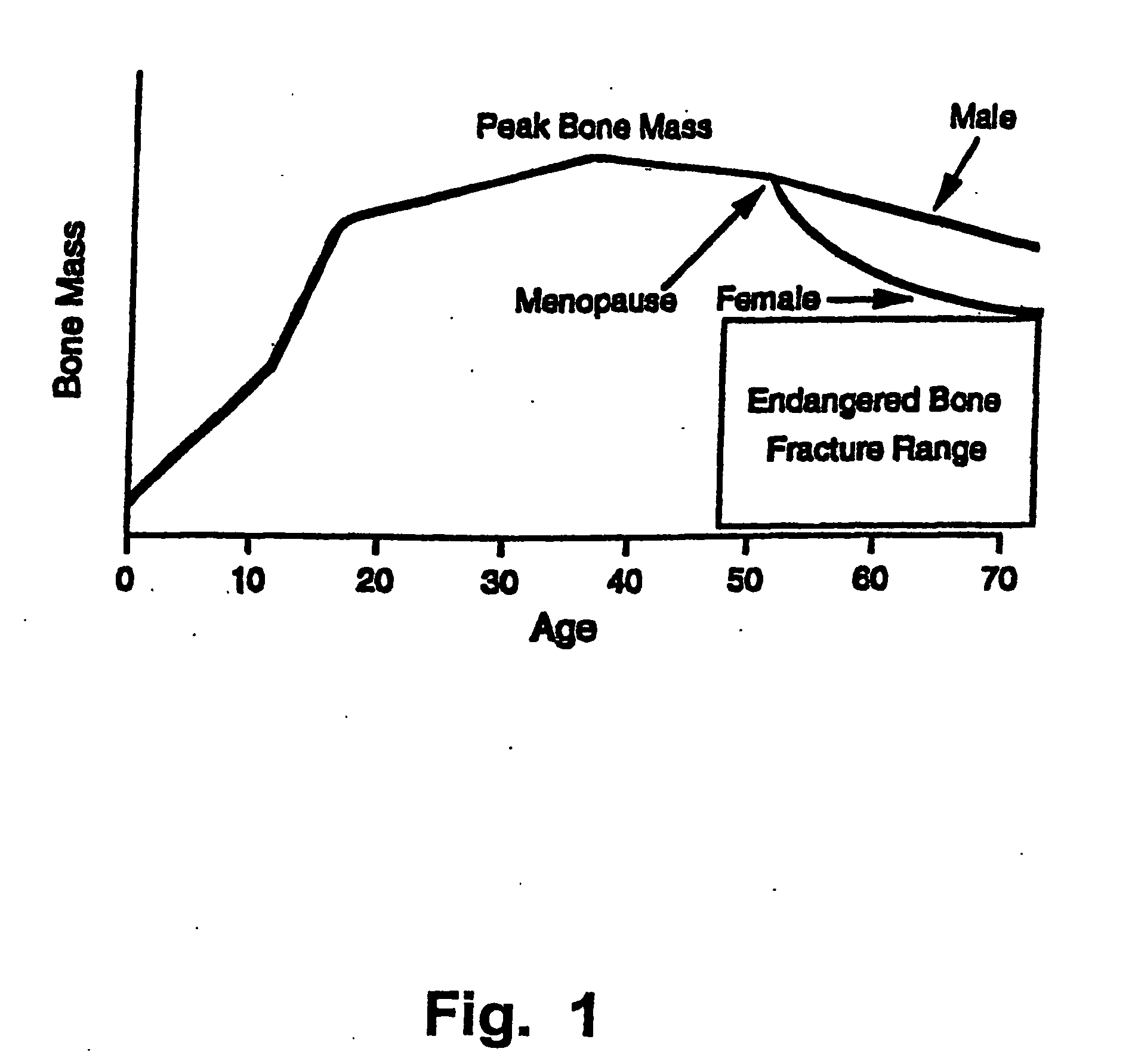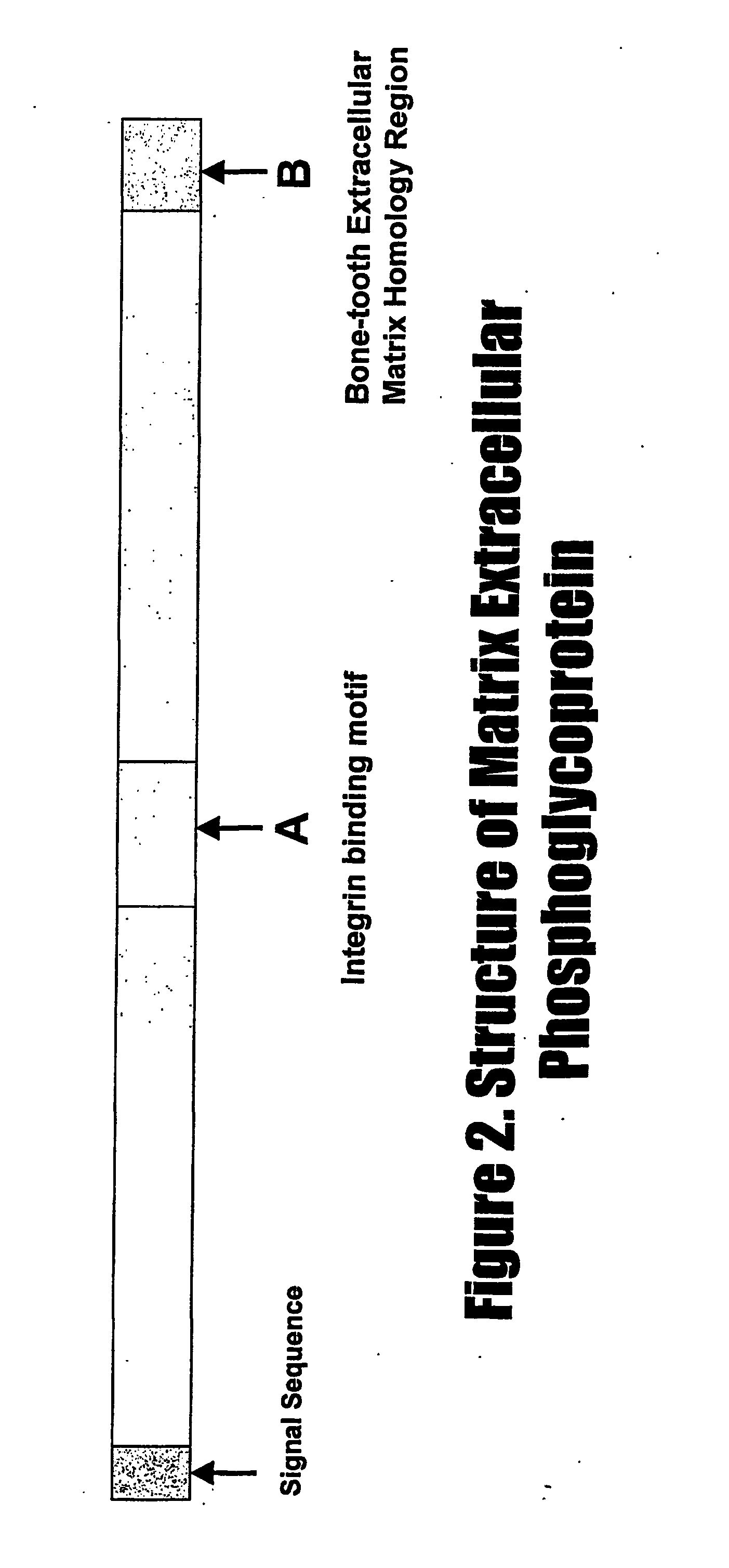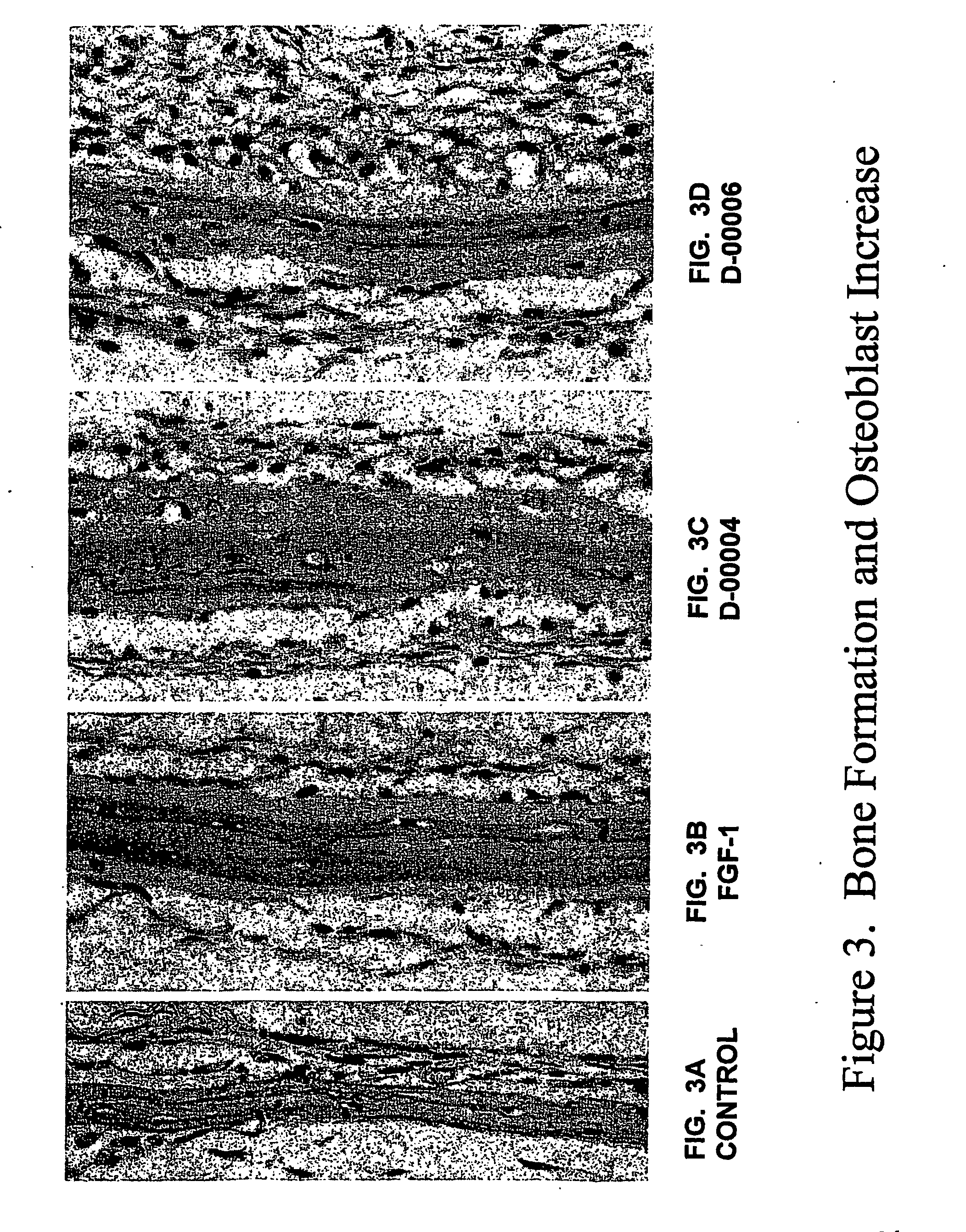Dental products comprising bone growth enhancing peptide
a technology of bone growth and peptide, which is applied in the field of dental products, can solve the problems of increasing the frequency and severity of bone fractures, deteriorating other mental and physical functions, and affecting the health of patients, so as to enhance the amount of osteoblasts, prevent damage to teeth and/or alveolar bones, and enhance skeletal growth
- Summary
- Abstract
- Description
- Claims
- Application Information
AI Technical Summary
Benefits of technology
Problems solved by technology
Method used
Image
Examples
example 1
Synthesis of D-000001, etc.
[0070] Six different peptides were manually synthesized by the 9-fluorenylmethoxycarbonyl (Fmoc) strategy and prepared in the C-terminal amide form. The six peptides are as follows:
D-00001:IPSDFBGSGYTDLQE(SEQ ID NO:41)D-00002:DFEGSGYTDLQERGD(SEQ ID NO:42)D-00003:YTDLQERGDNDISPF(SEQ ID NO:43)D-00004:ERGDNDISPFSGDGQ(SEQ ID NO:44)D-00005:NDISPFSGDGQPFKD(SEQ ID NO:45)D-00006:TDLQERGDNDISPFSGDGQPFKD(SEQ ID NO:46)(C-terminus amidated)
[0071] Amino acid derivatives and resins were purchased from Bachem, Inc., Torrance, Calif., and Novabiochem, La Jolla, Calif. The respective amino acids were condensed manually in a stepwise manner using 4-(2′, 4′-dimethoxyphenyl-Fmoc-aminomethyl)-phenoxy resin. N-methyl pyrrolidone was used during the synthesis as a solvent. For condensation, diisopropylcarbodiimide / N-hydroxybenzotriazole was employed, and for deprotection of Nα-Fmoc groups, 20% piperidine in N-methyl pyrrolidone was employed. The following side chain protectin...
example 2
Fetal Mouse Calvarial Assay
[0072] Reagents
[0073] FGF-1 was purchased from Peprotech Inc. (Rocky Hill, N.J.). RGD-1, 2, 3, 4, 5 and 6 (referred to here as D-00001, D-00002, D-00003, D-00004, D-00005 and D-00006) were provided by Dr. Nomizu (Hokkaido University, Japan).
[0074] Mice
[0075] Pregnant ICR mice were purchased from SLC Japan Co. Ltd. (Shizuoka, Japan).
[0076] Mouse Calvarial Organ Culture
[0077] Mouse calvarial organ culture was performed as described in Mundy G et al. Science 286: 1946-1949, 1999 and Traianedes K et al. Endocrinology 139: 3178-3184, 1998. The calvaria from 4-days-old mice were excised and cut in half along the sagittal suture. Each half of the calvaria was placed on a stainless steel grid in a 12-well tissue culture dish (Asahi Glass Techno Corp., Funabasbi, Japan). Each well contained 1.5 ml of BGj medium (Sigma, St. Louis, Mo.) supplemented with 0.1% bovine serum albumin (Sigma) and each compound. FGF-1 was used as a positive control as described by Mu...
PUM
| Property | Measurement | Unit |
|---|---|---|
| Fraction | aaaaa | aaaaa |
| Biological properties | aaaaa | aaaaa |
Abstract
Description
Claims
Application Information
 Login to View More
Login to View More - R&D
- Intellectual Property
- Life Sciences
- Materials
- Tech Scout
- Unparalleled Data Quality
- Higher Quality Content
- 60% Fewer Hallucinations
Browse by: Latest US Patents, China's latest patents, Technical Efficacy Thesaurus, Application Domain, Technology Topic, Popular Technical Reports.
© 2025 PatSnap. All rights reserved.Legal|Privacy policy|Modern Slavery Act Transparency Statement|Sitemap|About US| Contact US: help@patsnap.com



